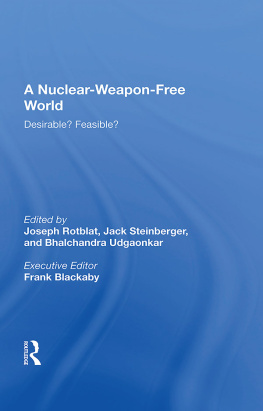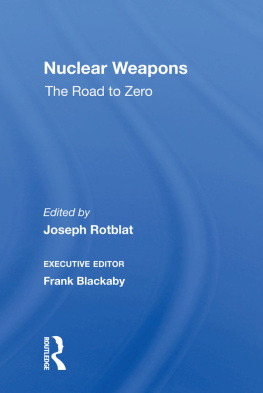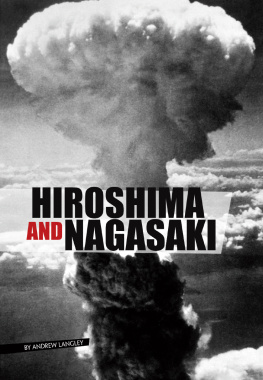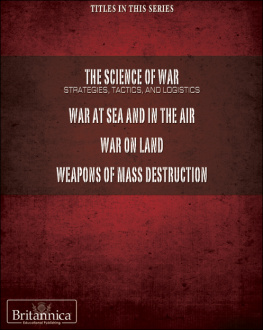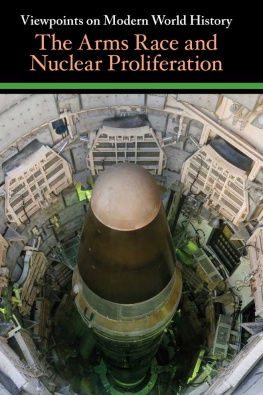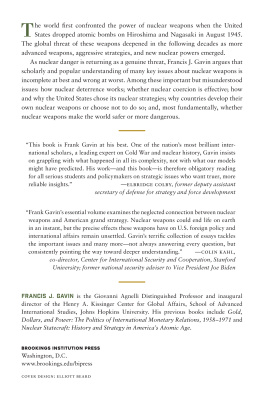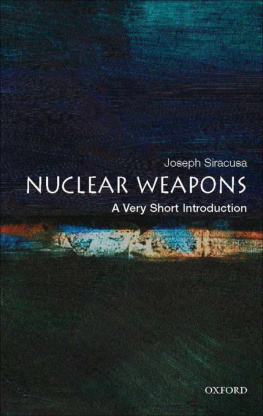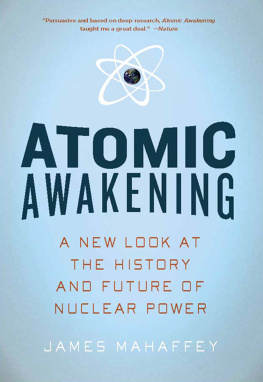First published 1993 by Westview Press
Published 2018 by Routledge
52 Vanderbilt Avenue, New York, NY 10017
2 Park Square, Milton Park, Abingdon, Oxon OX14 4RN
Routledge is an imprint of the Taylor & Francis Group, an informa business
Copyright 1993 by Taylor & Francis
All rights reserved. No part of this book may be reprinted or reproduced or utilised in any form or by any electronic, mechanical, or other means, now known or hereafter invented, including photocopying and recording, or in any information storage or retrieval system, without permission in writing from the publishers.
Notice:
Product or corporate names may be trademarks or registered trademarks, and are used only for identification and explanation without intent to infringe.
Library of Congress Cataloging-in-Publication Data
A Nuclear-weapon-free world: desirable?, feasible? / edited by Joseph
Rotblat, Jack Steinberger, and Bhalchandra Udgaonkar.
p. cm.
Includes bibliographical references and index.
ISBN 0-8133-8718-3 (hc.) ISBN 0-8133-3013-0 (pbk.)
1. Nuclear disarmament. 2. Nuclear-weapon-free-zones.
3. Security, International. I. Rotblat, Joseph, 1908
II. Steinberger, J. III. Udgaonkar, B. M.
JX1974.7.N847 1993
327.174dc20
92-21168
CIP
ISBN 13: 978-0-367-00966-3 (hbk)
The elimination of nuclear weapons has been the declared objective of the United Nations from the very beginning of its existence; this has been affirmed ever since in many declarations and resolutions signed by member states, including the nuclear-weapon states. During the period of the Cold War these desires were disregarded. The titanic struggle between Communism and anti-Communism generated an unrestrained arms race that resulted in absurdly huge nuclear arsenalsreaching a peak of nearly 60,000 warheadsand threatened the very continuance of civilization.
The idea of a nuclear-weapon-free world was put back on the world agenda by Mikhail Gorbachev in 1986 and was nearly endorsed by President Reagan. The end of the Cold War, a few years later, has so transformed the political climate that this idea is no longer fanciful; it merits serious study. In 1990 the Council of the Pugwash Conferences on Science and World Affairs decided to set up such a study. This book is the result. Its main purpose is to initiate a debate on this issue, so that it can be given careful examination. The question is, with the number of nuclear warheads coming down from 60,000 to 6000, should plans now be made for an ultimate move to zero?
It is now widely accepted that nuclear warheads have no military utility as weapons of war. In the famous words of Reagan and Gorbachev: a nuclear war cannot be won and must never be fought. The only possible function of nuclear weapons is to deter their use by another state, but that argument becomes invalid if satisfactory guarantees can be given that no state possesses them. Since the retention of nuclear weapons by any state is bound to be an incentive for other states to acquire them, a nuclear-weapon-free world would appear a more desirable alternative, provided that it is found possible to establish an effective verification system. Thus, the main issues considered in this book concern the desirability and feasibility of a nuclear-weapon-free world.
The book is divided into five parts. , consisting of one chapter, looks at the past attempts to eliminate nuclear weapons, and sets out the reasons for thinking that current attempts are more likely to be successful.
In , the two chapters question whether the five major nuclear powers add anything to their security by retaining nuclear weapons. The doctrine of nuclear deterrence is critically examined. The main threat to world security, it is argued, now comes from the horizontal proliferation of nuclear weapons, and in the long run the only way to stop this isas with chemical weaponsby an agreement to ban them entirely. The conclusion is that a nuclear-weapon-free world is desirable.
The question of feasibility is discussed in . In seven chapters, the measures are considered that would be needed to safeguard and enforce observance of a treaty which established a nuclear-weapon-free world. These measures include technological and societal systems of verification of compliance with the terms of such a treaty. Possible ways of violating the treaty by breakout, that is the clandestine development of nuclear weapons after the treaty has come into force, are examined. There is a discussion of the terms of a treaty for the elimination of nuclear weapons, on the means of its enforcement in the political climate of a world without nuclear weapons, and on the security requirements of such a world. Ways to make nuclear weapons illegal are also examined against the background of existing treaties in this area. The general trend of opinion in the papers in this section is that a nuclear-weapon-free world is feasible, though some aspects of it require further study.
Three chapters in examine alternative routes to a nuclear-weapon-free world. The case for endowing the United Nations with a small nuclear cache is argued, both for and against. An idea is also put forward of a gradual approach to the objective by creating an appropriate political climate.
The final chapter, in , discusses the successive steps that might lead to a world without nuclear weapons.
The substance of the chapters is summarized in the Executive Overview, written by the Executive Editor, Frank Blackaby. This represents his epitome of the material and arguments put forward in the book. It is the outcome of discussion with the authors, whose comments have been taken into account.
Although the study was carried out under the auspices of the Pugwash Conferences on Science and World Affairs, all authors contributed in their personal capacity and the views expressed are their own. Similarly, any mention of the institutions with which they are or have been associated is merely for the purpose of identification.
The contributors, as the notes on them show, come from eleven countries and represent a wide range of scientific disciplines and analytical approaches. All of them were involved in debates on the relevant issues in Pugwash meetings or other forums. A number of other scholars have also been involved in the project, either attending meetings of authors or reviewing chapters of the book. In particular, we want to express our thanks to the following: Professor Jack Boag, Dr. Pal Dunay, Professor Lawrence Freedman, Professor Knut Ipsen, Sir Ronald Mason, Dr. Harald Mller, Professor Robert Neild, and Lord Zuckerman.
In the preparation of the book we received prodigious help from Tom Milne, who, in addition to producing the camera-ready copy and the index, has also done much of the editing of the material.
The project would not have got off the ground without financial assistance. For this we are indebted to the W. Alton Jones Foundation for a generous grant. The Director of its Secure Society Program, George Perkovich, took an active part in our discussions.

